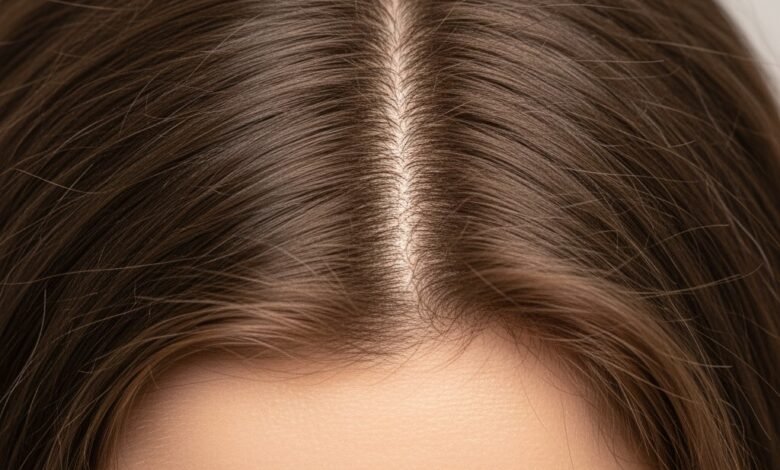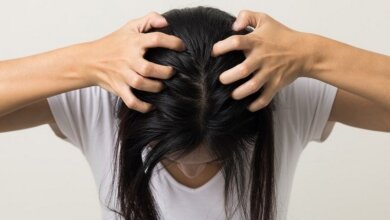Alopecia: A Scientific Guide to Understanding the Differences in Male and Female Pattern Baldness

Understanding Early Signs: When Does Hair Loss Become a Problem?
Seeing a clump of hair in your comb or on the bathroom floor can trigger panic. However, it’s important to understand that hair loss is a normal part of the biological cycle. The American Academy of Dermatology (AAD) states that losing 50 to 100 strands of hair per day is normal. These hairs will be replaced by new growth. Alarms should go off when hair loss occurs massively, suddenly, or if you start to notice significant thinning where the scalp becomes more clearly visible. This condition is medically known as alopecia.
Alopecia is not a single disease, but rather an umbrella term for various hair loss conditions. “Understanding the specific type of alopecia is the first and most crucial step in determining an effective diagnosis and treatment,” explains Dr. Oma Agbai, a dermatologist and director of Multicultural Dermatology and Hair Loss Disorders at UC Davis. The causes are multifactorial, ranging from genetics, hormonal fluctuations, physiological stress, medical conditions, to nutritional deficiencies. Among these various types, the most common is androgenetic alopecia, or more commonly known as pattern baldness.
The Root Cause: The Role of Hormones and Genetics in Baldness
Although often considered a single problem, the mechanisms behind pattern baldness in men and women are fundamentally different, especially at the hormonal and genetic levels. The main key lies in androgen hormones, particularly Dihydrotestosterone (DHT).
Dihydrotestosterone (DHT): The Main Trigger for Androgenetic Alopecia
Dihydrotestosterone (DHT) is a derivative of the hormone testosterone, formed through the action of the enzyme 5-alpha reductase. Both men and women produce testosterone, but men produce it in much higher amounts. In genetically predisposed individuals, hair follicles in certain areas of the scalp become highly sensitive to DHT. When DHT binds to receptors on these follicles, it triggers a process called ‘miniaturization’. Hair follicles gradually shrink, their growth cycle shortens, and the resulting hair becomes finer, shorter, and more fragile, until eventually the follicle stops producing hair altogether.
Differences in Follicle Response in Men and Women
In men, follicles in the frontal hairline, temples, and crown (vertex) are the most genetically vulnerable to the effects of DHT miniaturization. This is why the pattern of baldness in men is so characteristic. Conversely, in women, lower testosterone levels and the presence of estrogen provide a protective effect. Although women also have DHT, their follicle sensitivity and hair loss pattern tend to differ, leading to more diffuse thinning rather than total baldness in specific areas.
Understanding Male Pattern Baldness
Pattern baldness in men, or Male Pattern Baldness (MPB), follows a highly predictable pattern and is classified using the Norwood Scale. This scale outlines 7 main stages of baldness progression.
The process generally begins with thinning in two main areas:
- Receding Hairline: Hair in the temple area begins to thin and recede, often forming an ‘M’ shape.
- Vertex Thinning: Simultaneously or subsequently, the area on the crown or top of the head begins to thin, forming a small bald spot that slowly expands.
Over time, these two areas will merge, leaving a horseshoe-shaped patch of hair on the sides and back of the head. This area tends to be resistant to DHT, explaining why bald men often still have hair in these sections.
Dissecting Female Pattern Hair Loss
Pattern baldness in women, or Female Pattern Hair Loss (FPHL), has different manifestations and is classified using the Ludwig Scale. Unlike men, women rarely experience a complete receding hairline.
The characteristic features of FPHL are:
- Diffuse Thinning: Hair loss occurs more evenly across the entire top of the head.
- Widening Hair Part: The earliest and most common sign is a widening hair part down the middle over time, making the scalp more visible.
Although thinning can become severe, women with FPHL typically retain their frontal hairline and rarely become completely bald like men.
Other Types of Alopecia to Be Aware Of
Alopecia Areata: An Autoimmune Attack
This is an autoimmune condition where the body’s immune system mistakenly attacks healthy hair follicles, causing them to fall out. Its main characteristic is the appearance of one or more smooth, coin-shaped bald patches (alopecia) on the scalp or other parts of the body. This condition is unpredictable; hair can grow back and fall out again at any time.
Traction Alopecia: Damage Due to Hairstyles
Caused by chronic pulling on hair follicles. Hairstyles such as overly tight ponytails, braids, or the use of heavy hair extensions can cause permanent damage to the follicles. This type is more common in women due to hairstyling practices, but can also occur in men who continuously tie their hair tightly.
Telogen Effluvium: Hair Loss Due to Stress
This is a temporary form of hair loss that occurs after the body experiences severe shock or stress, such as post-surgery, childbirth, high fever, or extreme emotional stress. This condition causes a large number of hair follicles to enter the resting phase (telogen) prematurely, which then fall out several months later. Fortunately, hair usually grows back once the stress trigger is removed.
Conclusion: Accurate Diagnosis is Key to Effective Treatment
Understanding that baldness in men and women differs not only visually but also biologically is the foundation for proper management. Hormonal differences, genetic sensitivity, and manifestation patterns require tailored diagnostic approaches and treatment strategies. From the central role of DHT in androgenetic alopecia to autoimmune and mechanical triggers in other types of alopecia, each condition demands specific understanding.
If you are experiencing worrisome hair loss, the most important step is to consult a dermatologist or trichologist. An accurate diagnosis will pave the way for the most effective treatment, whether through medical therapy, lifestyle changes, or other supportive care, to help you optimally manage your hair and scalp health.






